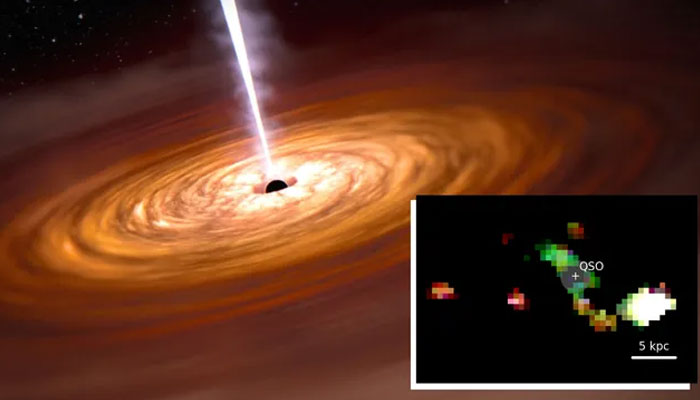
Astronomers have observed a dramatic "dance" between a supermassive black hole and two satellite galaxies with the help of the James Webb Space Telescope (JWST).
A bright quasar, that is so distant that JWST sees it as it was less than a billion years after the Big Bang, is being powered by this black hole. Moreover, it is also feeding on surrounding matter, reported Space.
The quasar has been designated as PJ308-21. In a galaxy that is in the process of merging with two massive satellite galaxies, it is localised to an active galactic nucleus (AGN).
The astronomers also found that both the quasar and the galaxies involved in this merger are highly evolved, which is a surprise considering they existed when the 13.8-year-old cosmos was just an infant. Moreover, they determined that the black hole has a mass equivalent to two billion suns.
"Our study reveals that both the black holes at the center of high-redshift [early and distant] quasars and the galaxies that host them undergo extremely efficient and tumultuous growth already in the first billion years of cosmic history, aided by the rich galactic environment in which these sources are formed," team leader Roberto Decarli, a researcher at Italy's National Institute for Astrophysics (Inaf), said in a statement.
Additionally, as part of the 1554 Program, the data was collected in September 2022 by JWST’s Near IndraRed Spectograph (NIRSpec) instrument.













